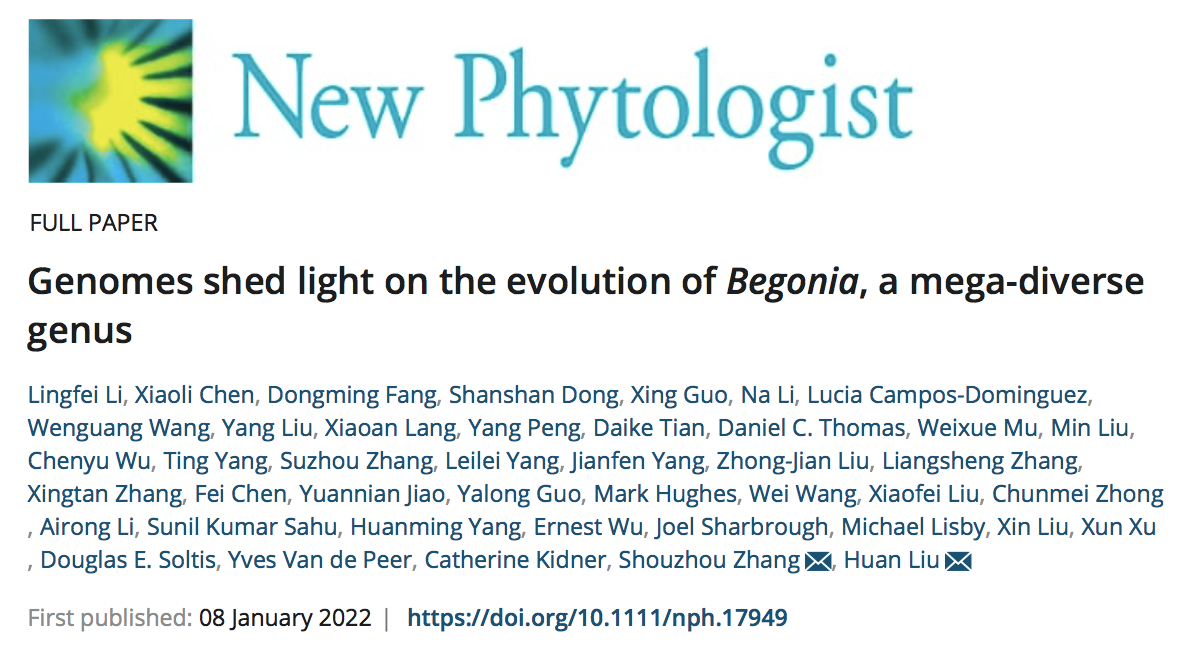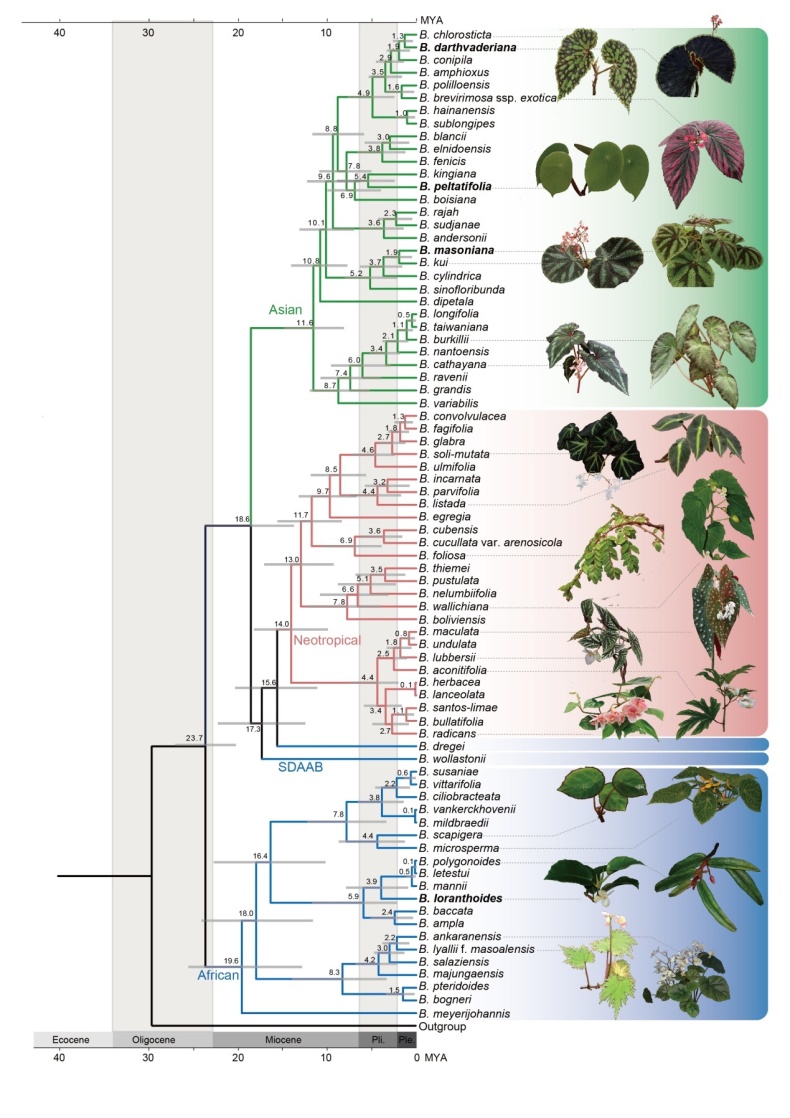The genus Begonia (Begoniaceae) is one of the top ten most species-rich genera of flowering plants, with more than 2,000 species. Recently, the genomic study of Begonia led jointly by Fairy Lake Botanical Garden and BGI-Shenzhen has been published in New Phytologist entitled "Genomes shed light on the evolution of Begonia, a mega-diverse genus".

Most species of Begonia are shade-adapted plants living in shady and humid environment in the world’s tropical and subtropical regions. Begonias have a wide variety of leaf shapes and leaf variegation, as well as flower colors, making them one of the most valuable ornamental plants around the world.

Diversity of leaf shapes and variegation of Begonia
The research team completed the whole genome sequencing of four species of Begonia, i.e. B.loranthoides, B. masoniana, B. darthvaderiana, and B. peltatifolia, and the genome shot-gun sequencing of 74 representative species to investigate lineage evolution and shade adaptation of the genus. The results showed that the genome size of the four species ranged from 331 Mb to 800 Mb, and the number of genes ranged from 22,059 to 23,444, and the BUSCO assessment reached more than 91%. The high quality genome assembly will provide important reference for functional genomic studies and molecular breeding of Begonia.

Phylogenetic tree showing the topology and divergence times for 78 newly sequenced species of Begonia.
This study revealed that Begonia has experienced a lineage-specific whole-genome duplication (WGD) event occurred ~35 million years ago, just before the diversification of the Begonia. Many genes related to photosynthesis and carbohydrate metabolism were retained and enriched after WGD. Multiple copies of receptor genes related to red light, blue light, and UV-B receptors (PHOT, CYR1/2, PHY and UVR8) were found to be retained and some of them have undergone functional divergence, which is important for Begonia to adapt to shade environment.

Lineage specific WGD and shade adaptation evolution of Begonia
It was also found that transposon elements (TEs) accounted for a large proportion of the genomes of Begonia with high interspecificity. The distribution of TE insertions at different positions in functional gene promoters and introns differed significantly among species and were biased to genes related to stress responses and metabolic processes, indicating that TEs are closely related to speciation and adaptation of Begonia.

TE evolution in the Begonia genomes
In addition, the study also provided evidence for hybridization introgression during the evolution of Begonia which might have contributed considerably to the diversification of Begonia, especially in taxa distributed in the Neotropics.
In summary, this study not only reveals new insights into the diversification and adaptation evolution of Begonia, and also provides important reference genomes for post-genomic studies of Begonia.




